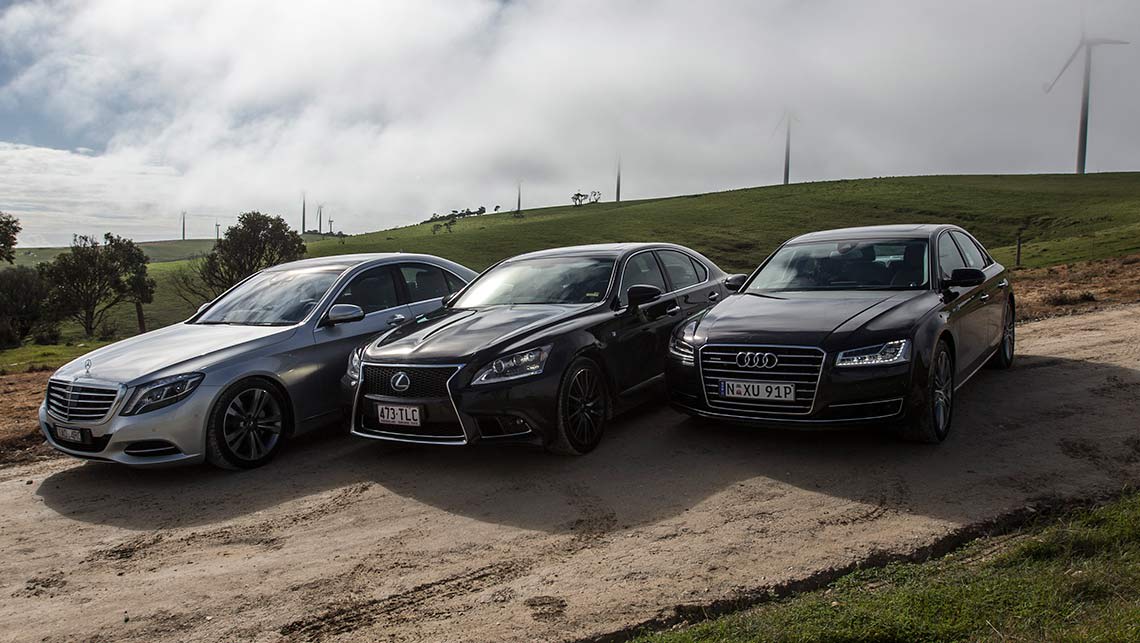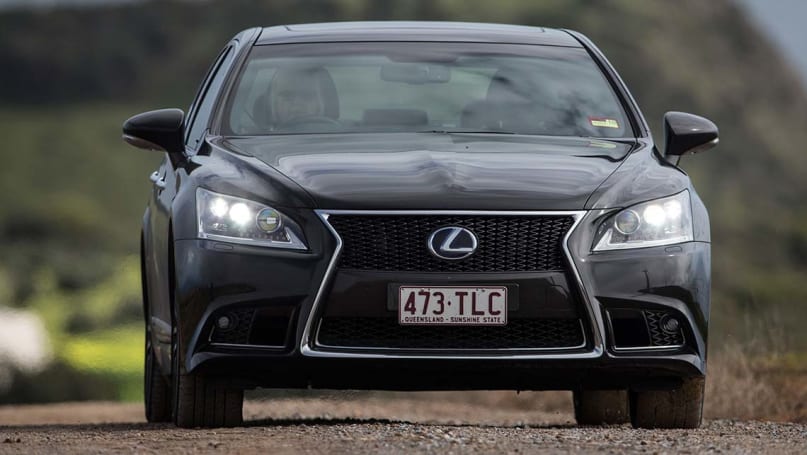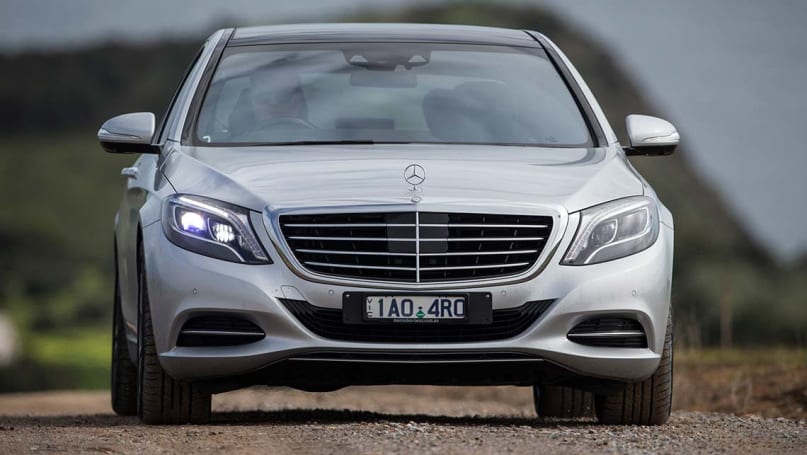
Ferrari 296 2024 review: GTS
A silent start-up, noiseless acceleration and an all-electric driving range? It...
Browse over 9,000 car reviews

What really makes life safer behind the wheel? The authorities' road toll reduction measures? Or the car companies' advances in technology, which have done plenty to keep us alive, as well as comfortable and entertained?
The technology that rolls out in luxury limos is appearing on mainstream cars faster than ever before. Stronger, lighter construction offsets the inclusion of the luxury and safety features and the still-heavy (but getting lighter) hybrid drivetrains, with the overall effect of using less fuel.
TRICKLE-DOWN EFFECT
Long synonymous with safety, Mercedes-Benz brought in airbags, anti-lock brakes and stability control among other features. The S-Class introduced ABS in late 1978 (it became standard on passenger cars six years later).
Now it takes half that time for lower-cost models to include new tech. With safety now a key selling point, Benz spokesman David McCarthy says the industry is working hard to implement active safety features.
"It goes beyond a (crash test) result - the reality is that where you will make the gains is the ability to avoid an accident," he says. 'Stability control can bring about a 30 per cent reduction in accidents."
ALL AHEAD FULL
We're testing three variations on a green theme - two V8s (Audi's twin-turbo diesel and Lexus's hybrid combo) and the diesel-electric Benz.
The S-Class's powertrain is the most recent of the three, with the four-cylinder - sadly at odds with the regally serene ambience of the rest of the car - letting you know it's a diesel. The noise apart, transitions between electric-only and assisted diesel are seamless.
In the S300, the GPS and satnav calculate the approaching topography and tailor the charging patterns to get the best fuel economy. Lexus owns the luxury hybrid ground but its LS flagship is less about fuel economy and more about performance - hence the F-Sport badges.
It's all-wheel drive and there's no shortage of go. The continuously variable transmission (doubling as a generator) makes life for occupants smooth and refined, while still boosting the battery.
The Audi has the most conventional drivetrain here, the monster outputs of the V8 turning all four wheels via an eight-speed automatic. It's a better example of a quiet, modern and frugal diesel, using two variable-geometry turbos to shove the two-tonne car to 100km/h in under 5 seconds.
MAKE IT SO
Among the rolling test beds for new construction methods, the Lexus shows its age. It uses some aluminium but more than half its body is high-tensile steel, which isn't a bad thing until you hit the scales, as it's the heaviest here.
Efforts to make the flagships lighter and stronger have paid dividends for Benz and Audi. The latter uses a structure with 13 grades of aluminium that weighs just 231kg or, Audi says, 40 per cent lighter than a corresponding steel body. It's all held together by 1847 punch rivets, 632 self-tapping screws and 202 weld points, as well as a 'structural adhesive" - glue to you and me - at the bolted connections of the door pillars, which incidentally are hot-rolled steel.
In the Benz's hybrid body structure, more than half of the shell is made from lighter-weight alloy; the passenger cell is high-strength steel.
SAFE AS HOUSES
Don't expect ANCAP crash rankings - the testing budgets only go so far - but as you'd expect, there are airbags galore, adaptive suspension and stability control.
These cars are the frontrunners on the accident prevention path. In each, the active cruise control uses radar and/or cameras to monitor traffic and obstacles ahead, either braking to avoid or bracing to lessen the impact if the driver fails to act.
The German machines detect pedestrians or large animals - day or night. The increased range of vision would be a welcome addition to any country driver's night-time arsenal.
The trio's LED headlights mask or dim individual LEDs as an antidazzle measure if other traffic is detected. Audi's headlights team up with the optional infra-red night vision - a pedestrian is highlighted for the driver and the LEDs also blink quickly three times to further warn the driver and the pedestrian.
Lane departure and blind spot warning have long progressed from these flagships to the sub-$50,000 segment. The Benz's driver assistance actively steers the car to keep it in the lane (even to the extent of fighting crosswinds), beeping at the driver to refocus attention.
JUST DRIVE
This is where the fat-cats really get the best bits - and taking it all in from the back seat isn't the best point of view as the driver is spoilt for information and capability. The S-Class is a magic carpet ride in Comfort mode, wafting along broken bitumen with regal indifference; Sport mode tightens up the haunches but not to the detriment of ride quality.
The Lexus feels hefty but the addition of active anti-roll bars improves ride quality and body control. The big V8 hybrid now hunts along a winding back road with greater composure. Neither hybrid's road manners are as impeccable as the Audi.
The A8's well-muted diesel V8 has an appealing soundtrack, but attraction becomes infatuation when it's unleashed towards the horizon - it progresses effortlessly and rapidly. Ride quality in the Audi is much improved and body control is hard to fault. Add to that the clever rear diff and rear-biased AWD and the A8 fires from corners with considerable alacrity.
The Audi's gear selector is an annoyance with little differentiation between gears and the $3550 dynamic steering option isn't to some tastes. The Lexus' 'fixed-mouse" controller isn't as intuitive as the other two, but otherwise the cabin is user-friendly.
The Germans bring in-car Wi-Fi and internet access linked to 3D satnav, the Audi using Google Earth imagery. The Lexus's 2D satnav betrays its age.
VERDICT
The three-pointed star shines in road manners, cabin comfort and safety tech but the diesel clatter disappoints. The intelligent drivetrain is otherwise useful and easily the most frugal here.
The Lexus is refined, smooth and swift, holding up well in lighter, leaner and more modern company but needs - like many of us - to drop some lard and update some key features, changes that can't be too far away. The Audi held the most appeal for the drive home - but it asks a lot more money for the privilege.
UNIQUE POINTS
The Mercedes-Benz claims to the first vehicle in the world to have no light bulbs - all illumination is LED. Benz also has a rear seat belt with an airbag function, spreading the load of crash forces on the passenger's rib cage.
The most torque of any Audi is generated by the 4.2-litre twin-turbo diesel V8 - 850Nm. This enables a 4.7-second sprint to 100km/h yet a claimed thirst of 7.4L/100km. Massaging front seats (with a handful of different modes) are standard fare on the A8.
The Lexus LS600h is the only V8 petrol-electric hybrid, and the brand's only all-wheel drive sedan.
COMMON GROUND
Dimensions: 5m long, almost 2m wide, 1.5m high Climate control aircon Adjustable and adaptive air-sprung suspension Heated and cooled front seats, heated rear seats Sensors and cameras for automatic parking Digital radio surround sound audio (with between 13 and 19 speakers) Ambient cabin lighting Front, front and rear side and full-length curtain airbags Active cruise control with auto-brake function.

Audi A8 4.2 TDI
Price: from $249,900
Warranty: 3 years/unlimited km
Capped servicing: No
Resale: 42 per cent
Service interval: 12 months/15,000km
Engine: 4.2-litre V8 turbo diesel V8, 283kW/850Nm
Transmission: 8-speed auto; AWD
Thirst: 7.4L/100km,194g/km CO2
Dimensions: 5.1m (L), 1.9m (W), 1.5m (H)
Weight: 2040kg
Spare: Space-saver

Lexus LS600H F-Sport
Price: from $217,700
Warranty: 4 years/100,000km
Capped servicing: No
Resale: 41 per cent
Service interval: 6 months/10,000km
Engine: 5.0-litre V8, 290kW/520Nm; electric motor, 165kW/500Nm
Transmission: CVT; AWD
Thirst: 8.6L/100km, 95 RON, 199g/km CO2
Dimensions: 5m (L), 1.9m (W), 1.5m (H)
Weight: 2340kg
Spare: Full-size

Mercedes-Benz S300 Bluetec hybrid
Price: from $195,000
Warranty: 3 years/unlimited km
Capped servicing: No
Resale: 48 per cent
Service interval: 12 months/25,000km
Engine: 2.0-litre 4-cyl turbo diesel, 150kW/500Nm; electric motor, 20kW/250Nm
Transmission: 7-speed auto; RWD
Thirst: 4.5L/100km, 118g/km CO2
Dimensions: 5.1m (L), 1.9m (W), 1.5m (H)
Weight: 2015kg
Spare: None; run-flat tyres
Comments